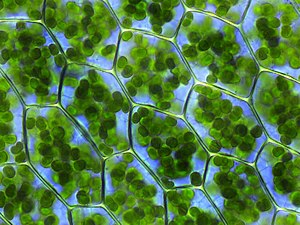
The chloroplast genome, also called chloroplast DNA, is the genetic material of chloroplasts, the cytoplasmic organelles characteristic of photosynthetic autotrophic organisms, such as plants and green algae.
Chloroplastic DNA duplicates itself semi-autonomously when the eukaryotic cell divides. Eukaryotic chloroplasts are evolutionarily derived from cyanobacteria and their DNA is a circular, double stranded molecule, containing between 120 and 160 Kpb. This DNA content is lower than that presented by green algae, so it is assumed that throughout its evolution its size has been reduced.1 2
The number of DNA molecules within each chloroplast is very variable. In plants this number ranges from 20 to 60, while in higher algae the number is greater. The organization of the cDNA is very simple since it has very few repeated sequences, although in most plant species the presence of an inverted duplication that includes tRNA genes has been demonstrated. The sequencing of chloroplast DNA has revealed that there are about 150 genes. In addition to the tRNA and rRNA genes there are about 90 genes that are involved in the functioning of the chloroplast itself, mainly in the process of photosynthesis. These genes are usually grouped into small niches whose organization has been maintained throughout evolution. The order of these genes within the chloroplast genome has not remained constant in all the species studied, which indicates that in the evolutionary process there have been structural chromosomal mutations.